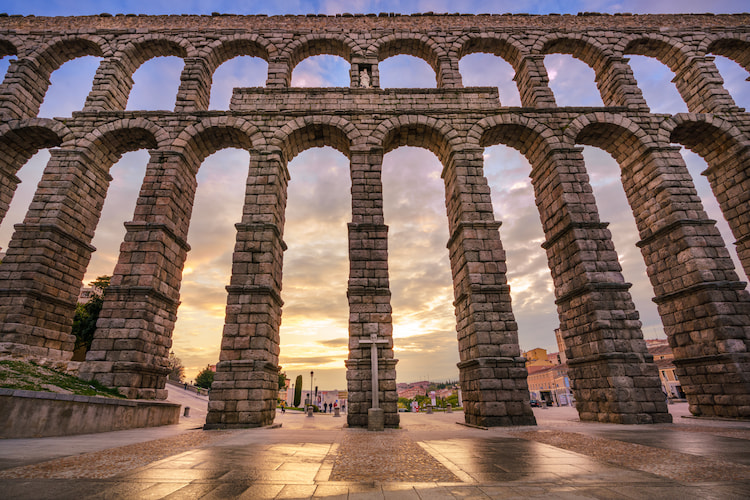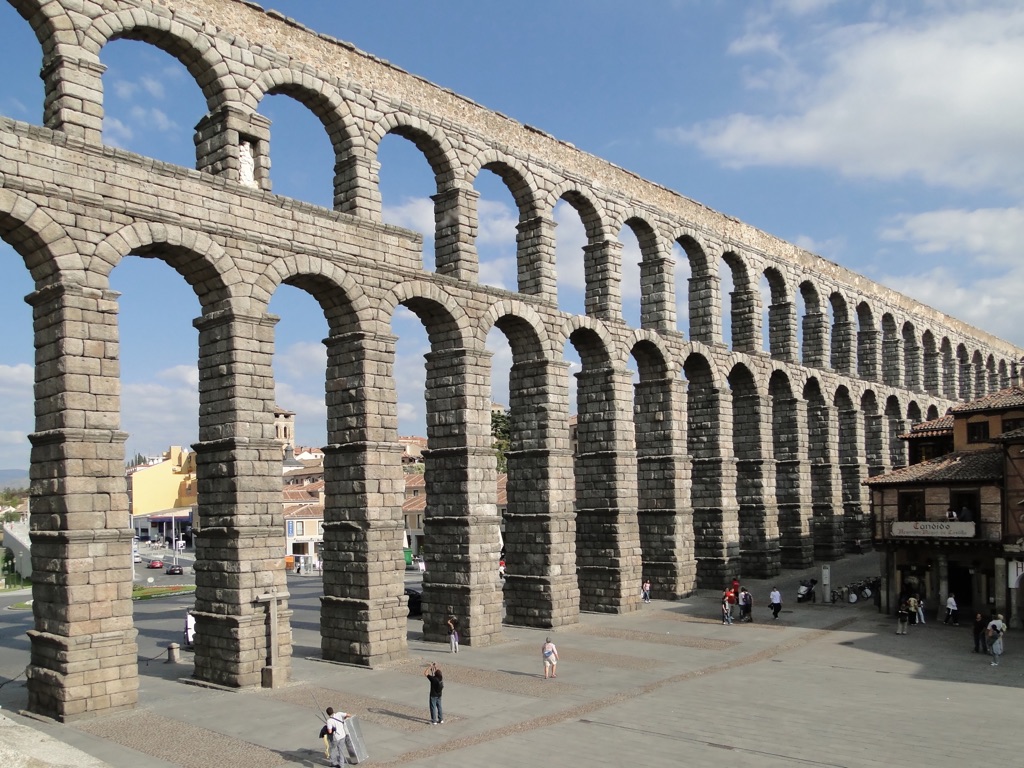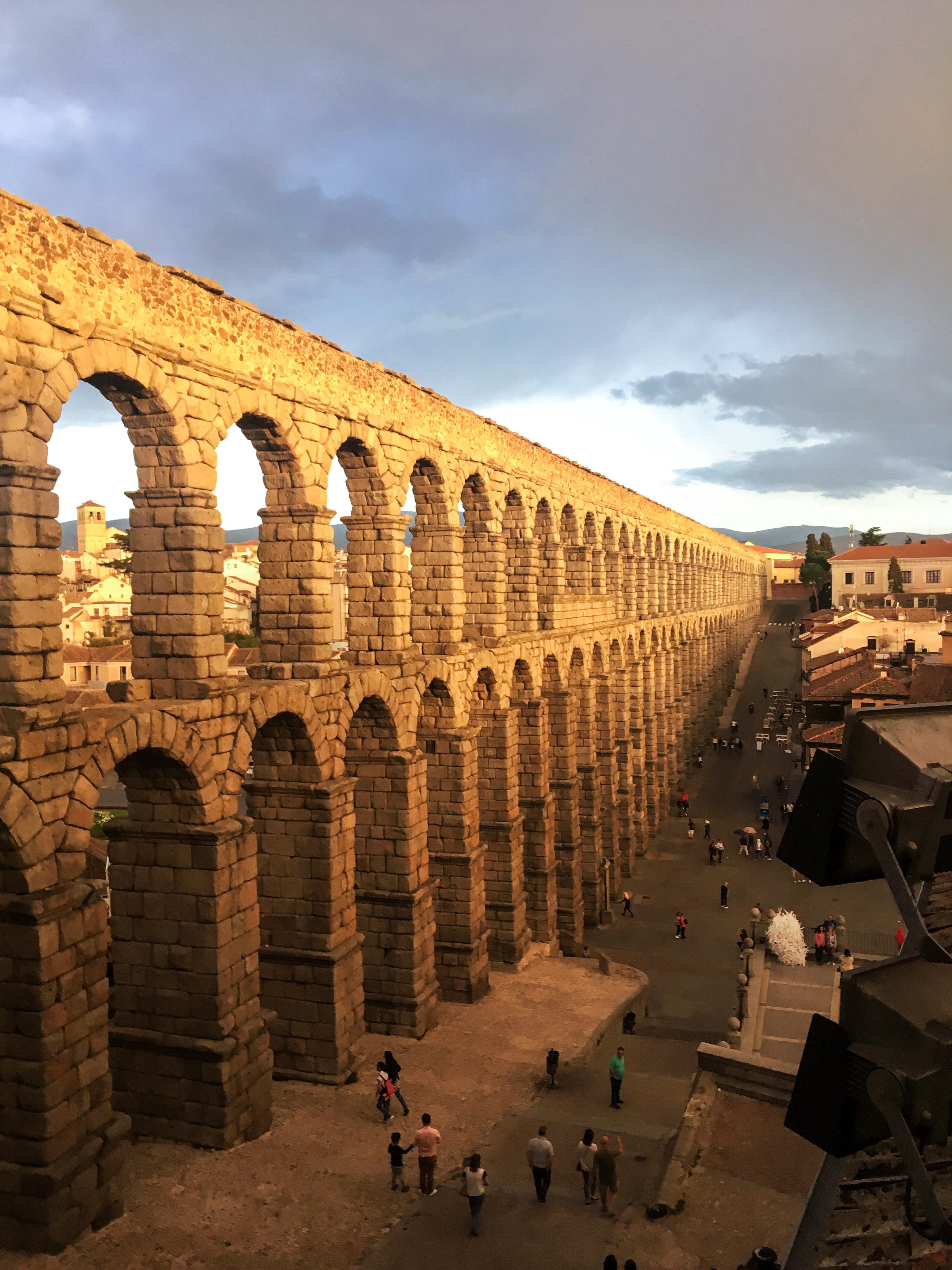No, this is NOT an AI image. What you see is the majestic Segovia aqueduct, a remarkable testament to the ingenuity of Roman engineering. Constructed during the reign of Emperor Trajan between AD 98 and 117, this monumental structure has withstood the test of time and remains a striking feature of the Spanish landscape.
Architectural Mastery
Spanning an impressive 2,388 feet (approximately 728 meters) and consisting of 165 arches, each rising over 30 feet (around 9 meters) high, the aqueduct is a stunning example of Roman architectural mastery. What sets it apart is that it was constructed using approximately 24,000 dark Guadarrama granite blocks, meticulously cut and fitted together without the use of mortar. This technique not only highlights the precision of Roman engineering but also ensures the structure’s durability and resilience against the elements.

The aqueduct’s design exemplifies the Romans’ sophisticated understanding of engineering principles. The use of a series of arches allows for the distribution of weight, enabling the aqueduct to span great distances without compromising stability. This innovative construction method reflects the Romans’ advanced knowledge of materials and structural integrity.
Historical Context
The Segovia aqueduct was built to transport water from the Frío River to the city of Segovia, showcasing the advanced engineering skills of the Romans in managing water supply. Water management was crucial for urban development in ancient Rome, contributing to public health and sanitation. The aqueduct not only facilitated urban growth but also improved the quality of life for its inhabitants by providing a reliable source of fresh water.

Over the centuries, the Segovia aqueduct has become a symbol of the city, embodying the engineering prowess of the Roman Empire. Its historical significance extends beyond its functional purpose; it serves as a reminder of the Roman commitment to public infrastructure, which laid the groundwork for modern urban planning.
Cultural Significance
Today, the Segovia aqueduct stands as a UNESCO World Heritage site and a major tourist attraction, drawing visitors from around the globe. Its architectural magnificence continues to captivate and inspire admiration. The aqueduct is not only a feat of engineering but also a cultural icon representing the enduring legacy of Roman civilization.

The aqueduct’s well-preserved state is a tribute to the skill and craftsmanship of ancient Roman builders. It stands as a testament to the resourcefulness and ingenuity of a civilization that has shaped the course of history. As a focal point in Segovia, it contributes to the city’s identity and serves as a tangible link to the past.
In summary, the Segovia aqueduct is more than just a remarkable structure; it is a symbol of human achievement that continues to resonate through the ages. Its blend of functionality and artistry encapsulates the essence of Roman engineering, ensuring that this monumental landmark remains an integral part of our shared history for generations to come.

